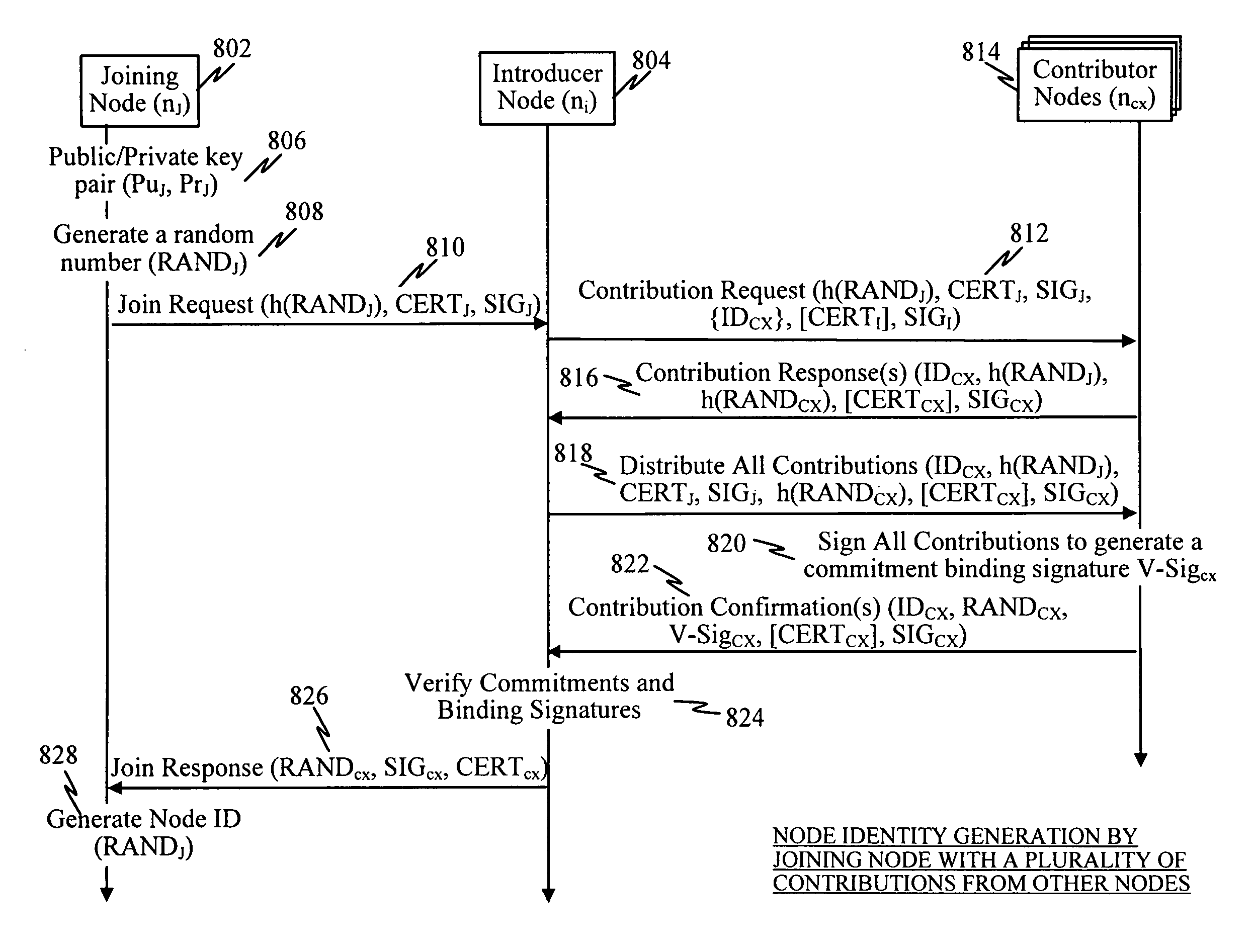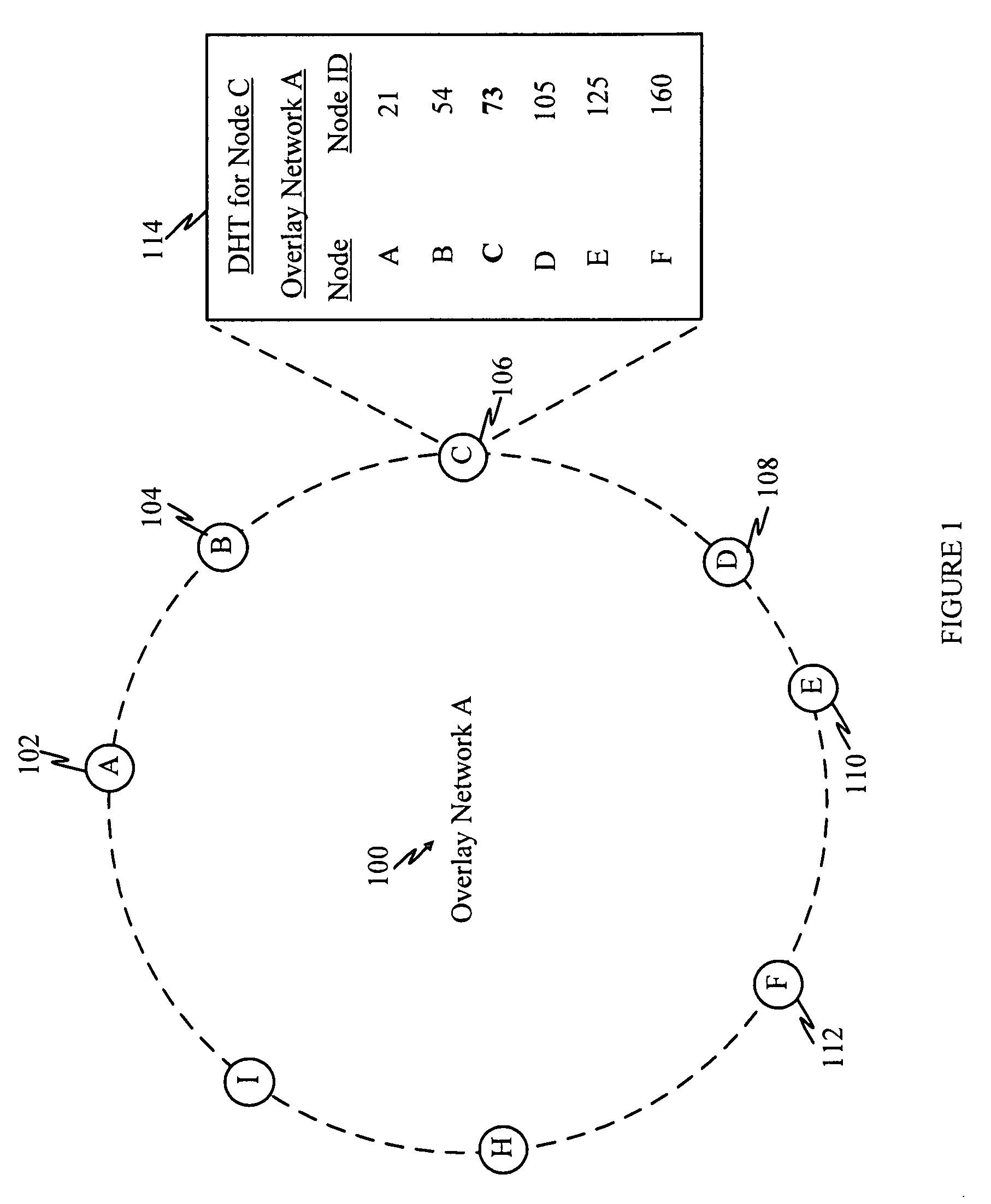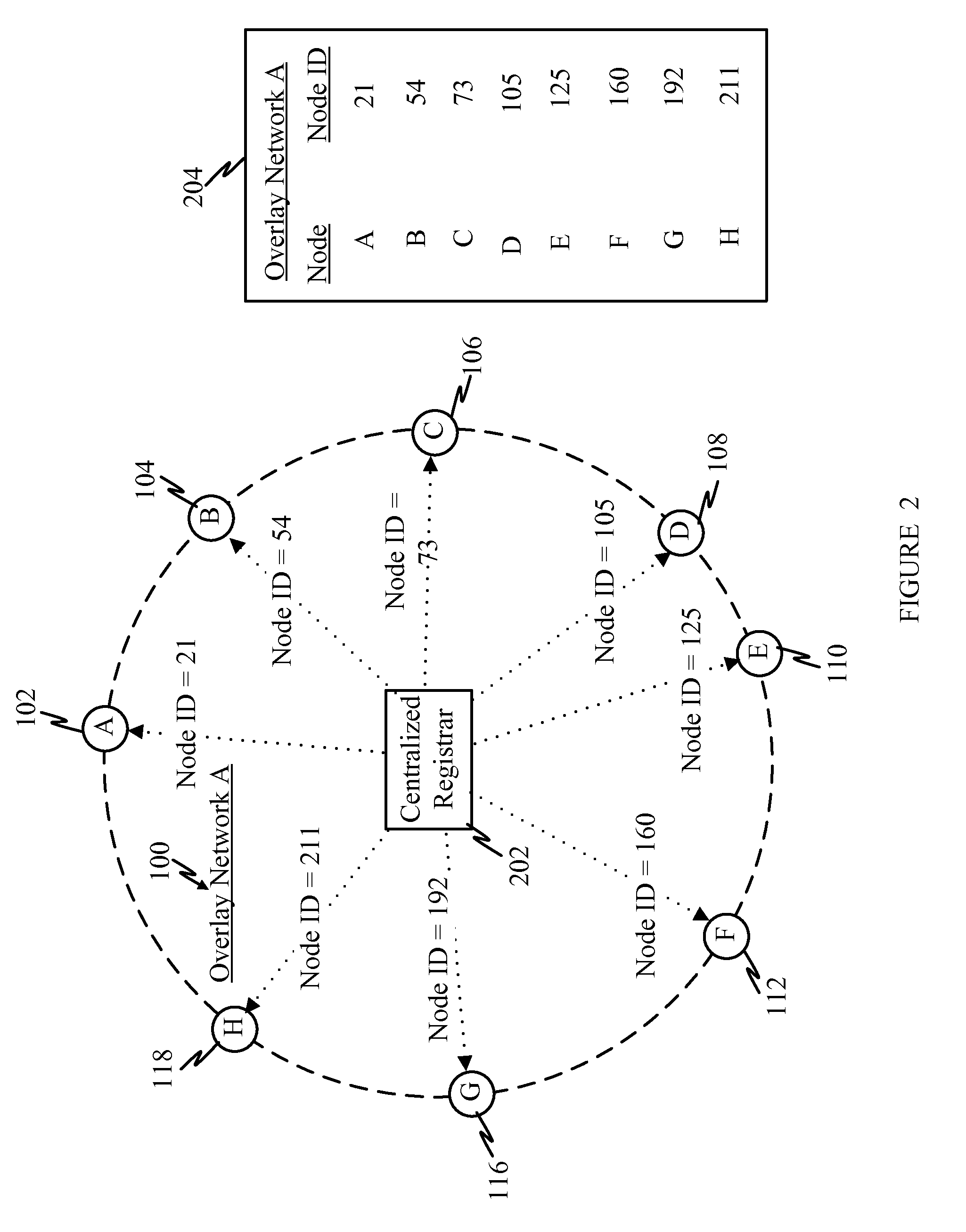Secure node identifier assignment in a distributed hash table for peer-to-peer networks
a peer-to-peer network and hash table technology, applied in the field of secure node identifier assignment in peer-to-peer network overlay, can solve the problems of dhts without built-in access control mechanisms, disrupt overlay routing, storage and other services, and disrupt the efficient operation of dht network topologies, so as to prevent collusion between nodes
- Summary
- Abstract
- Description
- Claims
- Application Information
AI Technical Summary
Benefits of technology
Problems solved by technology
Method used
Image
Examples
Embodiment Construction
[0038]In the following description, specific details are given to provide a thorough understanding of the embodiments. However, it will be understood by one of ordinary skill in the art that the embodiments may be practiced without these specific detail. For example, circuits may be shown in block diagrams in order not to obscure the embodiments in unnecessary detail. In other instances, well-known circuits, structures and techniques may be shown in detail in order not to obscure the embodiments.
[0039]As used herein, the terms “identification”, “identifier”, and “ID” may be interchangeably used to refer to a value that serves to identify a particular node.
Overview
[0040]One feature provides a multi-party commitment method whereby a joining node uses random inputs provided by contributor nodes in the network to generate its node ID. To prevent collusion between the joining node and other nodes, an introducer node randomly selects which nodes are to act as contributor nodes for the joi...
PUM
 Login to View More
Login to View More Abstract
Description
Claims
Application Information
 Login to View More
Login to View More - R&D
- Intellectual Property
- Life Sciences
- Materials
- Tech Scout
- Unparalleled Data Quality
- Higher Quality Content
- 60% Fewer Hallucinations
Browse by: Latest US Patents, China's latest patents, Technical Efficacy Thesaurus, Application Domain, Technology Topic, Popular Technical Reports.
© 2025 PatSnap. All rights reserved.Legal|Privacy policy|Modern Slavery Act Transparency Statement|Sitemap|About US| Contact US: help@patsnap.com



